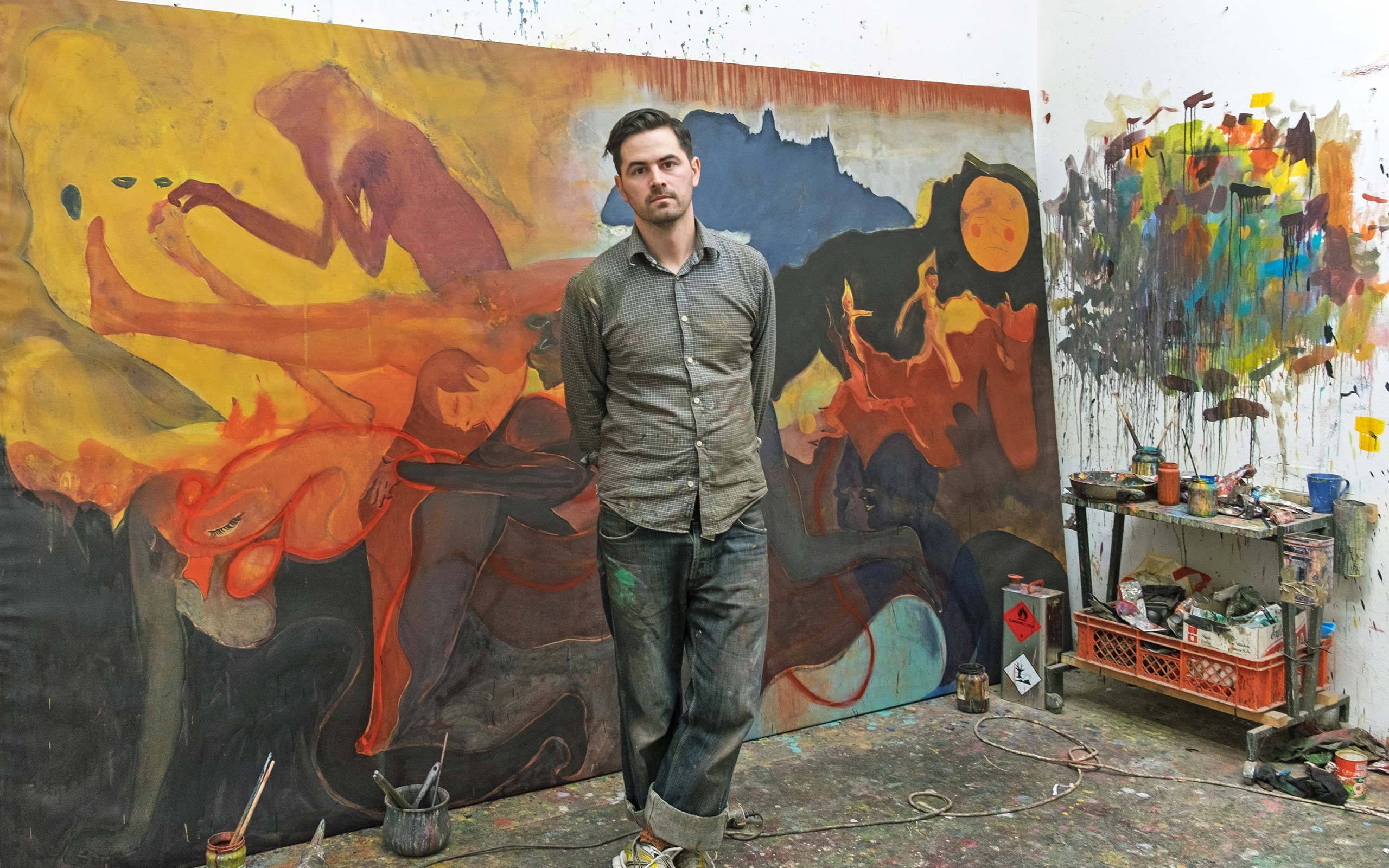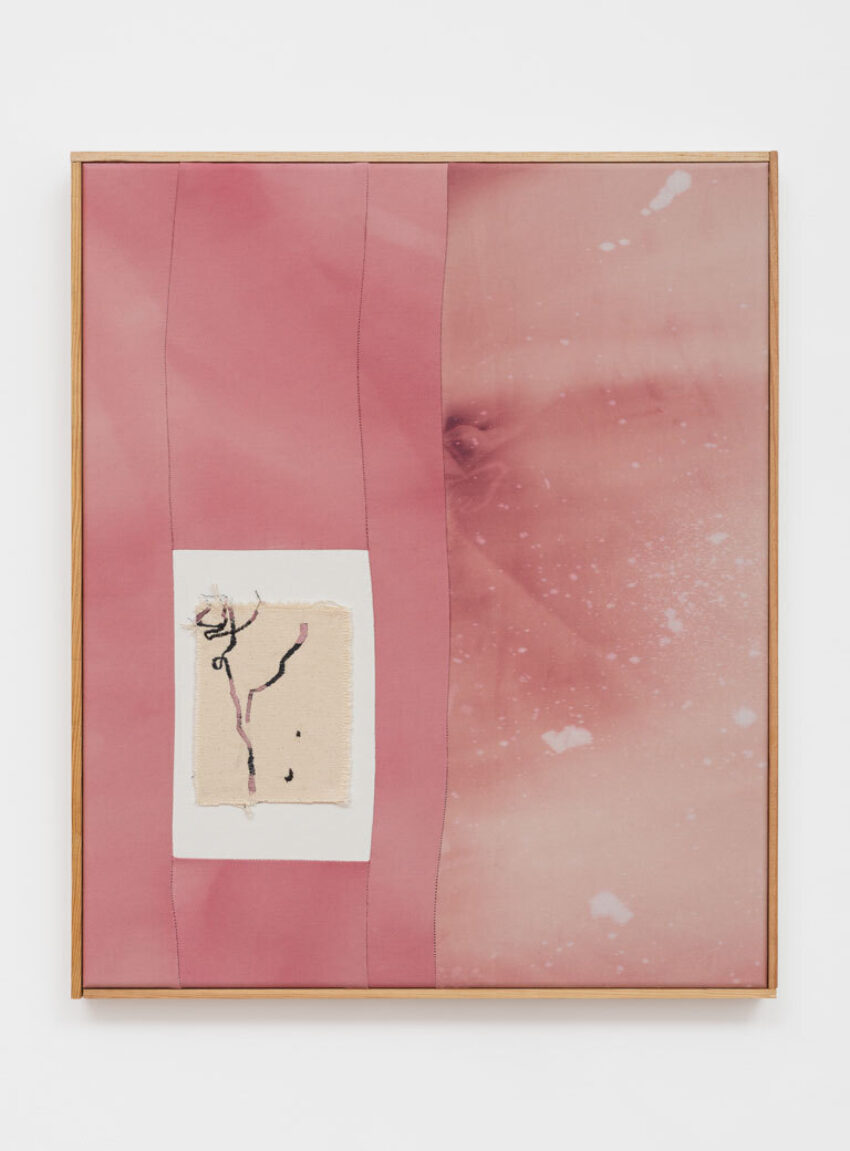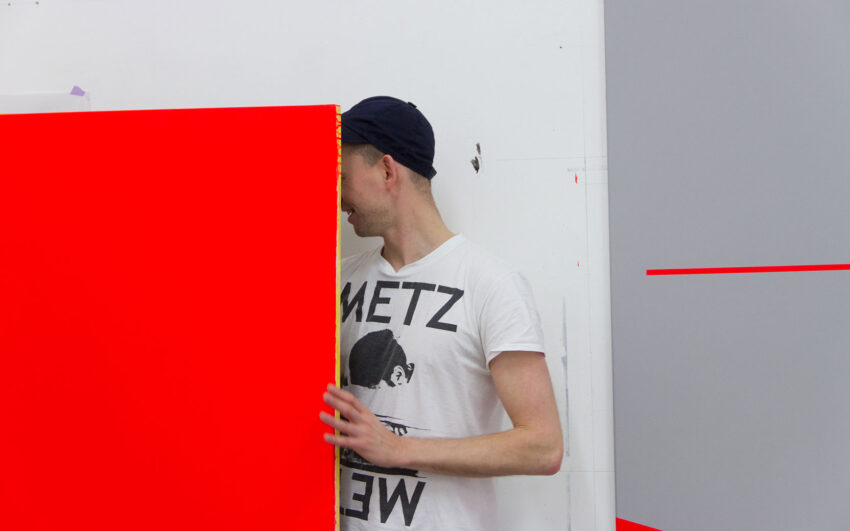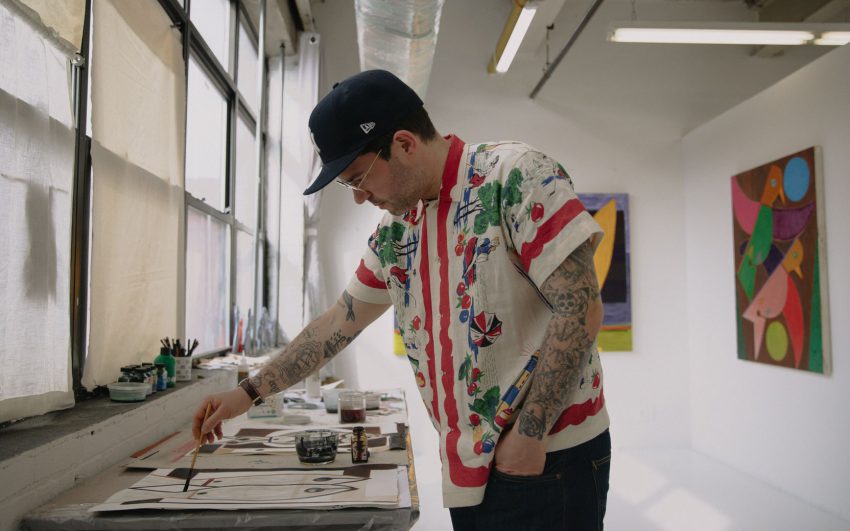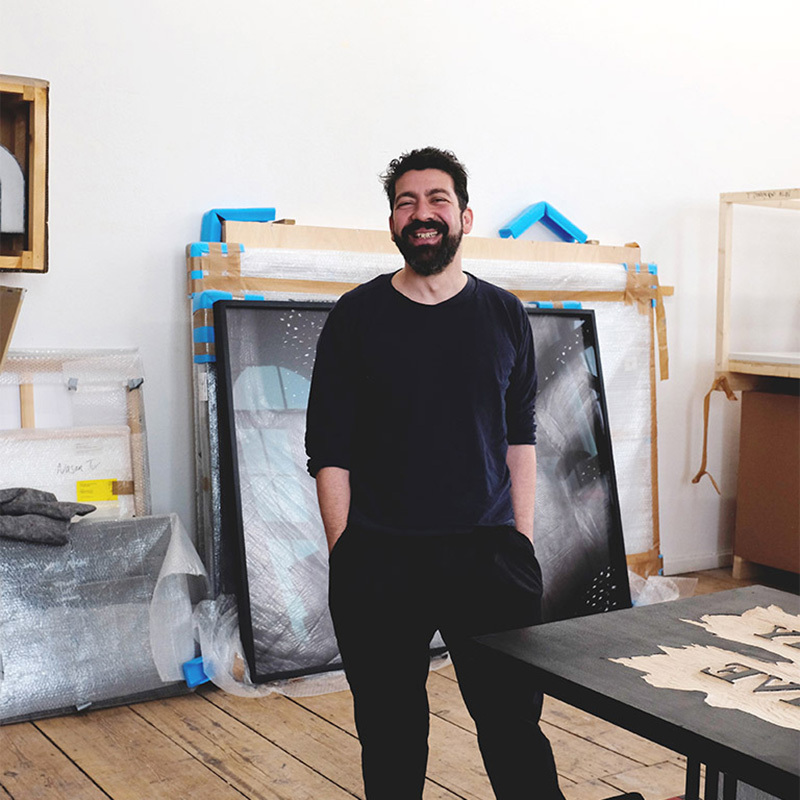Daniel Domig contests with the fleeting glance and fast-paced consumption of images, taught by the digital media. With swift and easy brush strokes he pronounces visual statements. We met Daniel in his studio, located in Vienna’s seventh district. He has already made a fire in his Canadian furnace. The room is filled with a pleasant scent of oil paint.
Daniel, the cold doesn’t seem to bother you, is that because you were born in Canada?
Yes, that's right, I was born in Canada, my Austrian father was studying there at the time. Two years later, my parents returned to Austria, which was where I grew up. Through my American mother I grew up bilingual and returned to the US from time to time. My brother still lives in New York as an actor. My sister and I decided to stay in Europe and I began studies at the Academy of Fine Arts in Vienna.
Do you still spend time In America?
Yes, I do. In recent years I have frequently exhibited in New York. Jane Kim, from the gallery which represents me, began the Thrust Projects which were followed by exhibitions at her gallery 33 Orchard. In the meantime, we have become good friends; this essentially characterizes all my professional relationships regardless whether with collectors, gallery owners, or colleagues.
You are not from an artistic family. Your parents are therapists, they don’t have a creative profession. How did you arrive at art?
My siblings and I believe that the cultural tension between a father from Vorarlberg and an American mother has contributed to that. As children we had noticed the financial disparity between our father's and our mother's families. On the American side: Two, three cars, refrigerators four times as big as ours. We realized: It's another country with a different culture. Our family was able to unite both cultures. It has prepared the way to see what is possible and how we can live. Our school in Salzburg was a high school that specialized in art & music. Many of the school’s graduates are musicians or artists today. At an age in which your peers strongly influence who you are, we were a group of friends who supported each other.
Had you already decided to study art at that time?
I had the good fortune to have a natural, almost intuitive inclination to make art. When people ask, whether they should do art, my answer usually is: If there is an option between art and something else, do the something else. In fact, for most art students, after their studies, things don’t always work out as they may have hoped. But because only successful artists end up being interviewed, the public perception is often skewed. One should create a magazine in which only people who had studied art, yet now work as bankers, would be interviewed. In hindsight, I consider myself as very fortunate to have started at a very young age and that my parents had nothing to do with art. In fact my idea of what it meant to live as an artist was rather romantic. I just assumed that I would always be poor and live on nothing but my own idealism. Once dead, my work would be discovered in the basement of my parents' house and recognised as not too shabby.
Do you believe that art students today are lacking this idealism?
It seems to me that there are people who decide to study art based on a misconception. They think all will run smoothly if they just make some good art and find a gallery. But if success doesn't happen and for most it doesn't, what will they do? How, in the course of a decade or two, do you end up in your studio every day rather than just occasionally. Maybe, one day, one's work may receive recognition. If you're fortunate this happens during your lifetime, if not, after your death.
At the moment you’re working on a very large canvas, rather unusual compared with the size of your other works.
That is true. I've only just begun this work. It was commissioned for the Evangelical chapel of the AKH (General Hospital Vienna) – it’s a Lenten cloth. It should be completed by Ash Wednesday, which is why I have been working almost continuously during the past two weeks. It is in fact the largest piece I ever made. I will have to roll it for its transportation, to actually get the canvas through the studio doors.
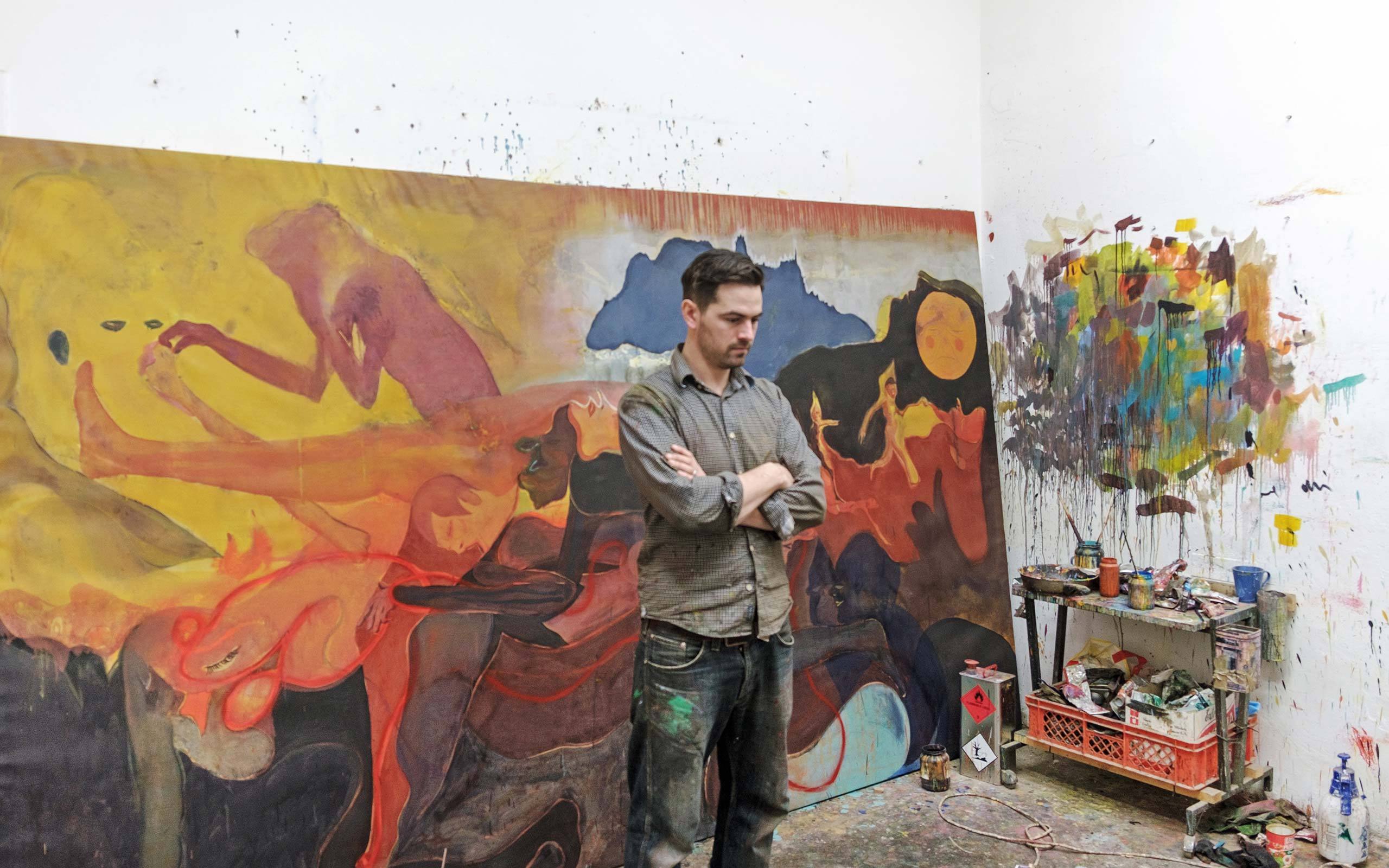
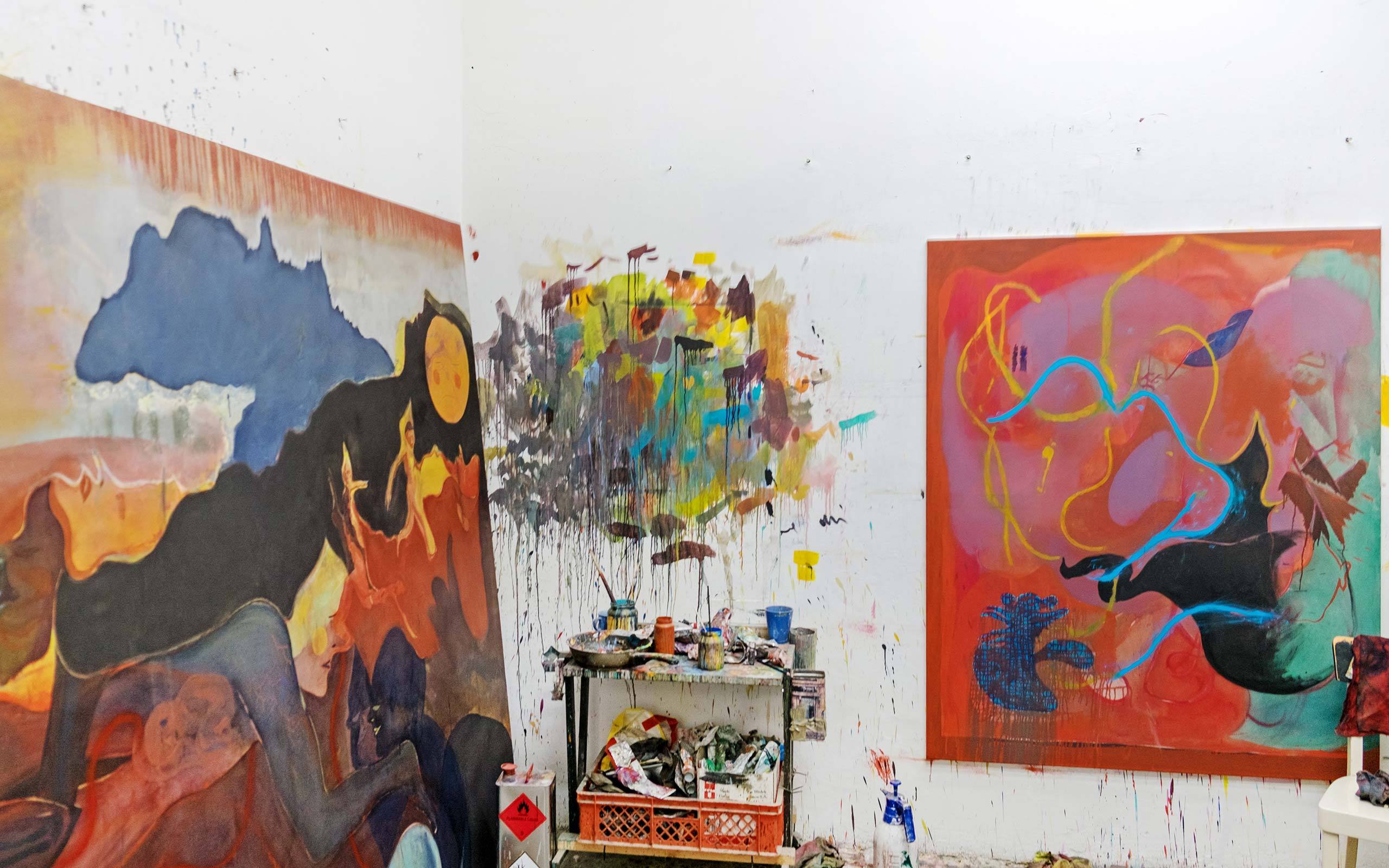
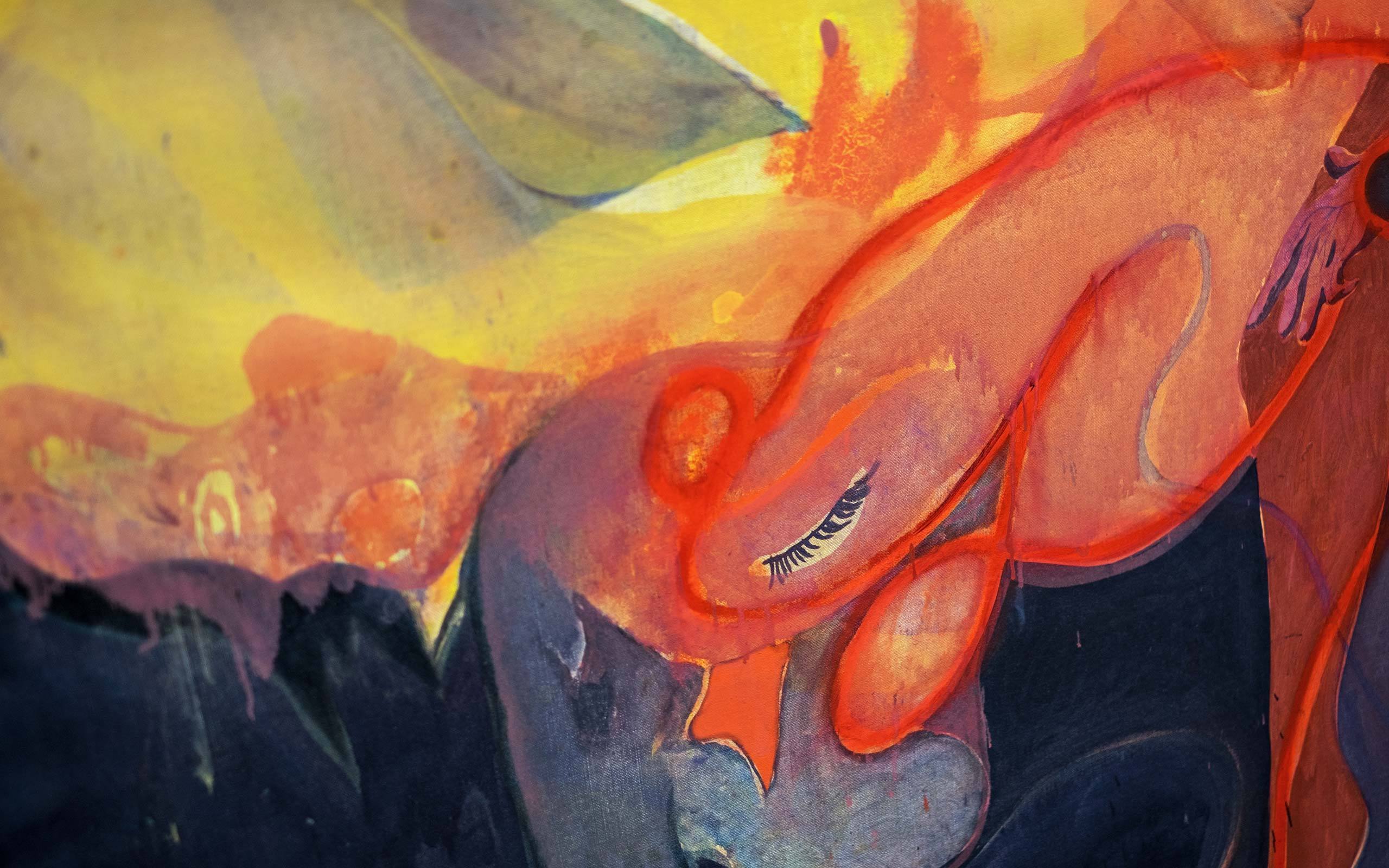
How do you start with a work? Do you first prepare a sketch?
No, no sketches. Actually I follow the method of the Abstract Expressionists, I just begin and see what happens. For the most part my canvases are not primed. The subject develops gradually. For example the squiggles (on the Lenten cloth) have appeared because in order to accelerate the painting process I don't squeeze the paint from the tube and apply it with a brush, rather I apply it directly from the tube; this is reminiscent of modeling with clay. The Material is very flexible and can be altered at any point. It is basically the same process here. In the beginning there is a lot of raw material on the canvas, which is then being formed. This transformation process takes quite some time. The other approach is a mere execution of an preconceived picture, which I find rather boring. It’s more exciting to see what’s hidden in the act of painting.
One can’t really speak about chance. You don’t just draw lines randomly and think: I could place an eye here, or perhaps there.
Gilles Deleuze once referred to Francis Bacon’s process of painting as "controlled chaos" and I would say that is the closest comparison to how I work. The truth is, that an artist is never one hundred percent in control. One owes something to the material one is working with. It’s a bit like a scientist, who in his lab collects data over many years and then one day his research funds are abruptly terminated. He has to decide whether to quit, or spend his days honouring the data he accumulated, by carefully interpreting it. This is the way I see it. For the past ten years I have collected data, a vocabulary of figures and shapes, and I will probably spend the rest of my life trying to make sense of it all. You must always go back into the lab, relax and trust that it has meaning and purpose.
Your work is always about something figurative.
Yes, figures always appear, but they are rarely anatomically correct. I think one will see immediately that I am not concerned with mere representation. Even if it is legitimate to use photographic means, Bacon for example used them as a visual reference, for me it is the interface to photo realism. In the end, it’s as though we hardly have an understanding of ourselves, without the confirmation of images. This to me explains the obsession with 'selfies'. It's as though we have such poor body awareness, that we have to take them again and again to affirm our sense of self-perceived identity. The possibility of achieving the perfect image through the unlimited resources of digital technology compared to that of actual photography is so recent and pervasive that we might ask ourselves how did humanity survive for so long without the help of the selfie-stick. My figures are certainly closer to the figure, which has no understanding of how it looks. Because one doesn’t have the “entry-point” of photography it is often more difficult to enter into the image, and this is the reason why I do not use photographic images as templates or references.
You have participated in large exhibitions at home and abroad. How does it feel to stand at the center of an exhibition?
One could say that it is a “necessary evil” in order to continue to exist. Every artist is happy when he or she has an exhibition and sells works. For me there is the very pragmatic purpose of supporting my family. It is good that there are people who are really very interested in art and who are willing to spend their money on it. That has always been and still is very noble. I know many artists who have difficulties in exhibition situations because the tension is very high. One has to learn what it means to be involved and not to deny or forget oneself.
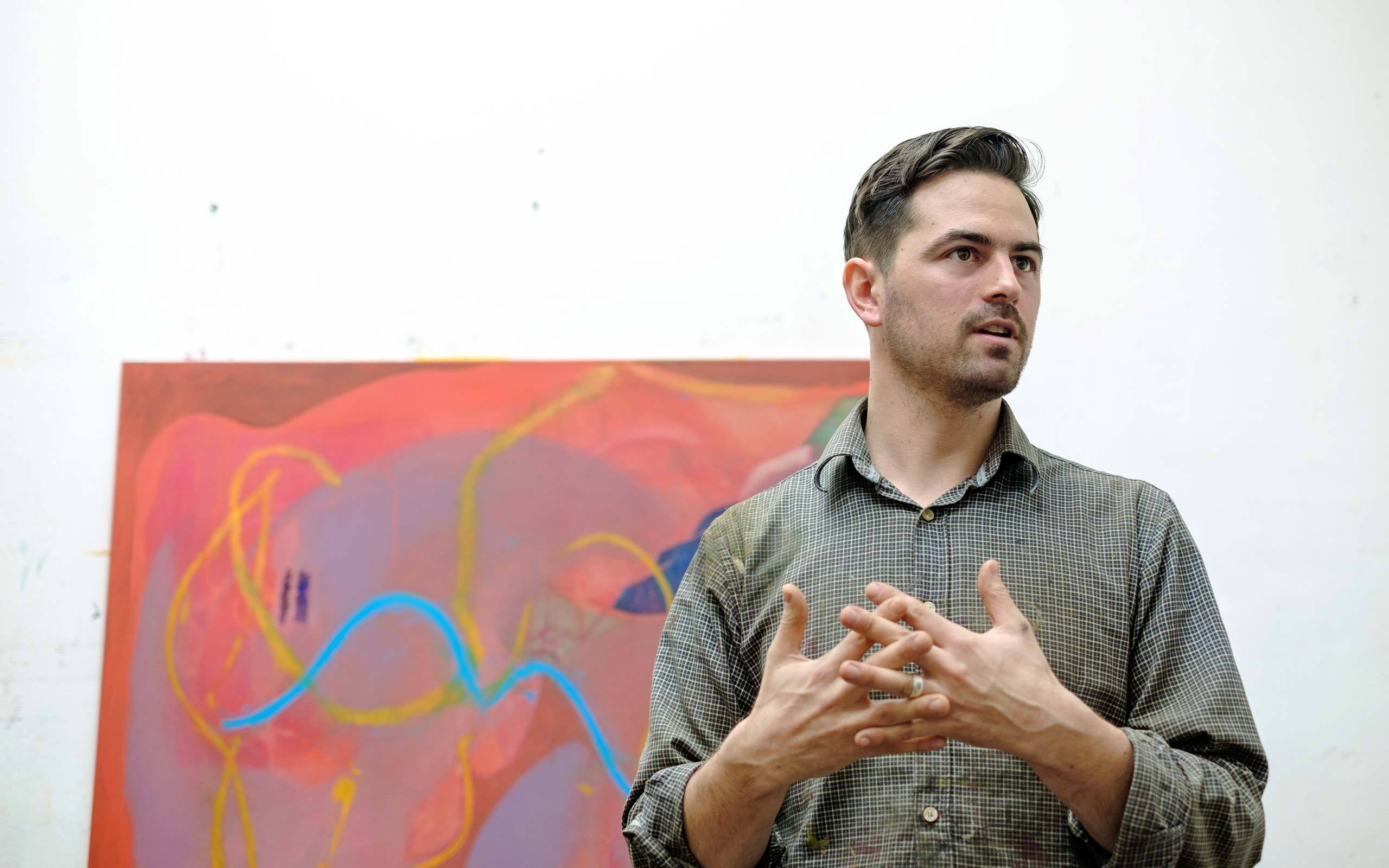
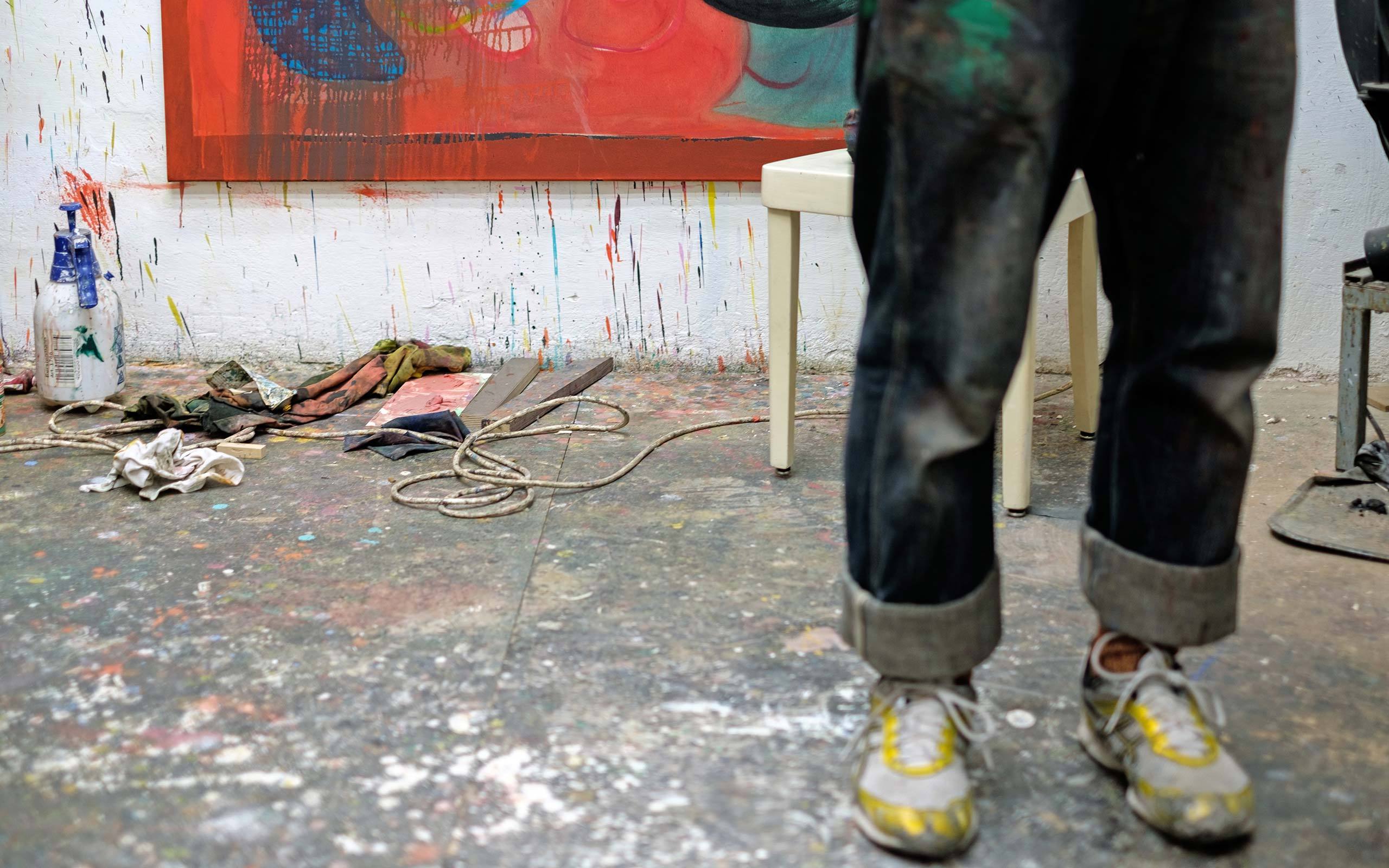
I have the impression that art students these days are taught more than in the past how to market themselves?
Yes, there surely is a “shift” compared to my time at the Academy. Some people can market themselves superbly. They have the disadvantage once they talk themselves into an exhibition. Then the contrast between what they say about their work and what they do is often very high. If it were a choice between making good work or talking a good game, I would choose the work. After all, if I am no longer available to speak about it, the work must speak for itself.
You have mentioned Francis Bacon earlier. Is he one of your heroes?
There are many things, which I like about him; he was certainly one of the painters who in the age of photography managed to keep figurative painting alive. One sees this also with the studio photos. Those he used were photographs that had to submit to the rigors of his studio and his work methods. They lay torn on the floor and were overpainted. Only this way did he use them as references. To my mind the most boring countermovement to photography is almost always an abstract and informal position, which does not even try to deal with the figure which now seems adequately represented by photography. Bacon was convinced that there still was a place for the figure within painting, without letting that figure submit to nor be overshadowed by photography.
For a few years now the term “Post-Internet-Art“ has established itself. This describes artists, who do not make art through the Internet, but rather work with material that they find there. As we have gotten to know you here, we find your world is a very different one.
In regard to digital art I have noticed that it uses the Internet as its main distribution medium which resulted in an accelerated act of seeing. This is different from looking at painting. If you do not want to see it as a representation or on Instagram you have to go to where the work is, to the artist’s studio or the gallery. That, obviously, slows down the process of seeing. One can easily scroll through digital objects and grasp them in large quantities at once. I often have the impression that much of digital art may appear to be extremely progressive but usually follows a very conservative composition based on classical works of art. This anti-aesthetic which some artists have adopted by photographing something “as ugly as possible” – is informed by established, artistic norms and packaged as a pixilated jpeg-image.
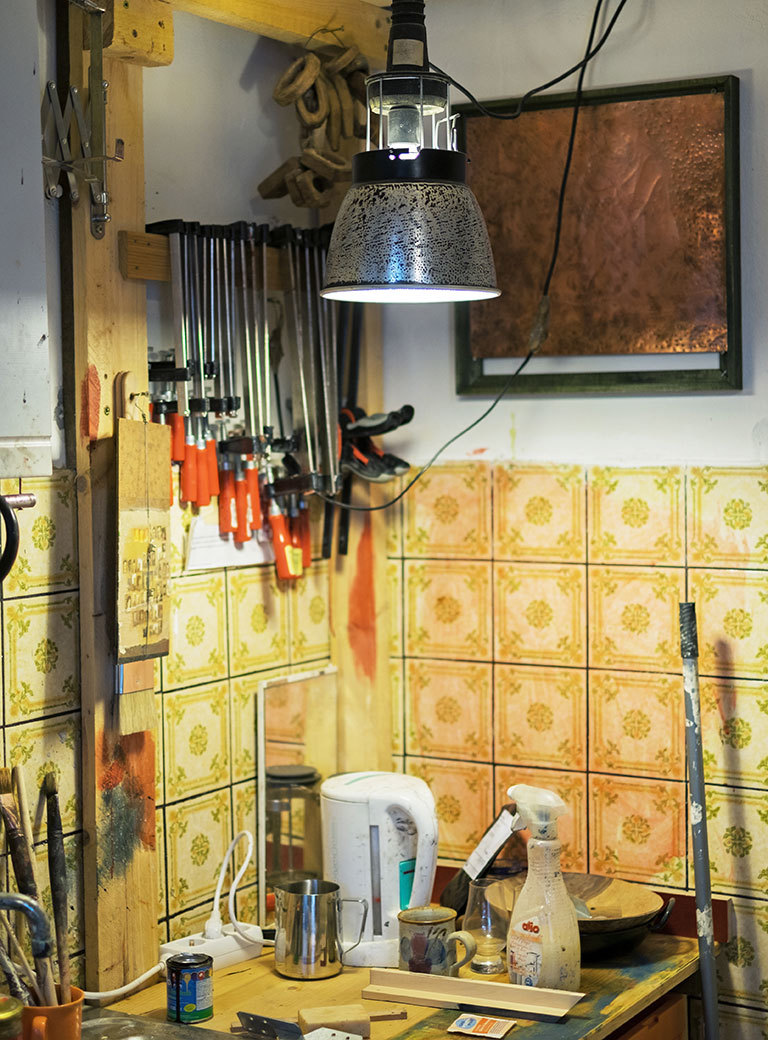
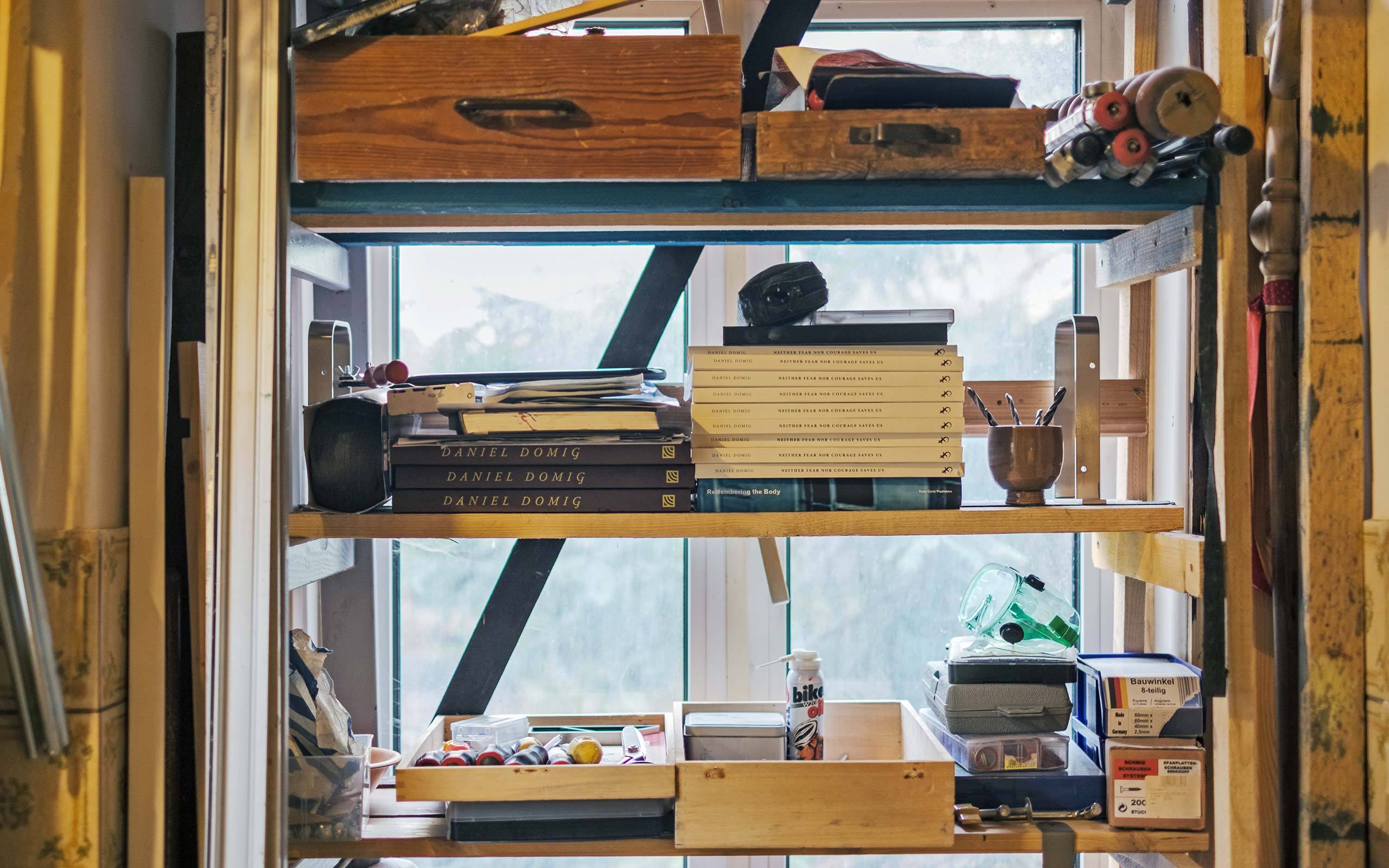
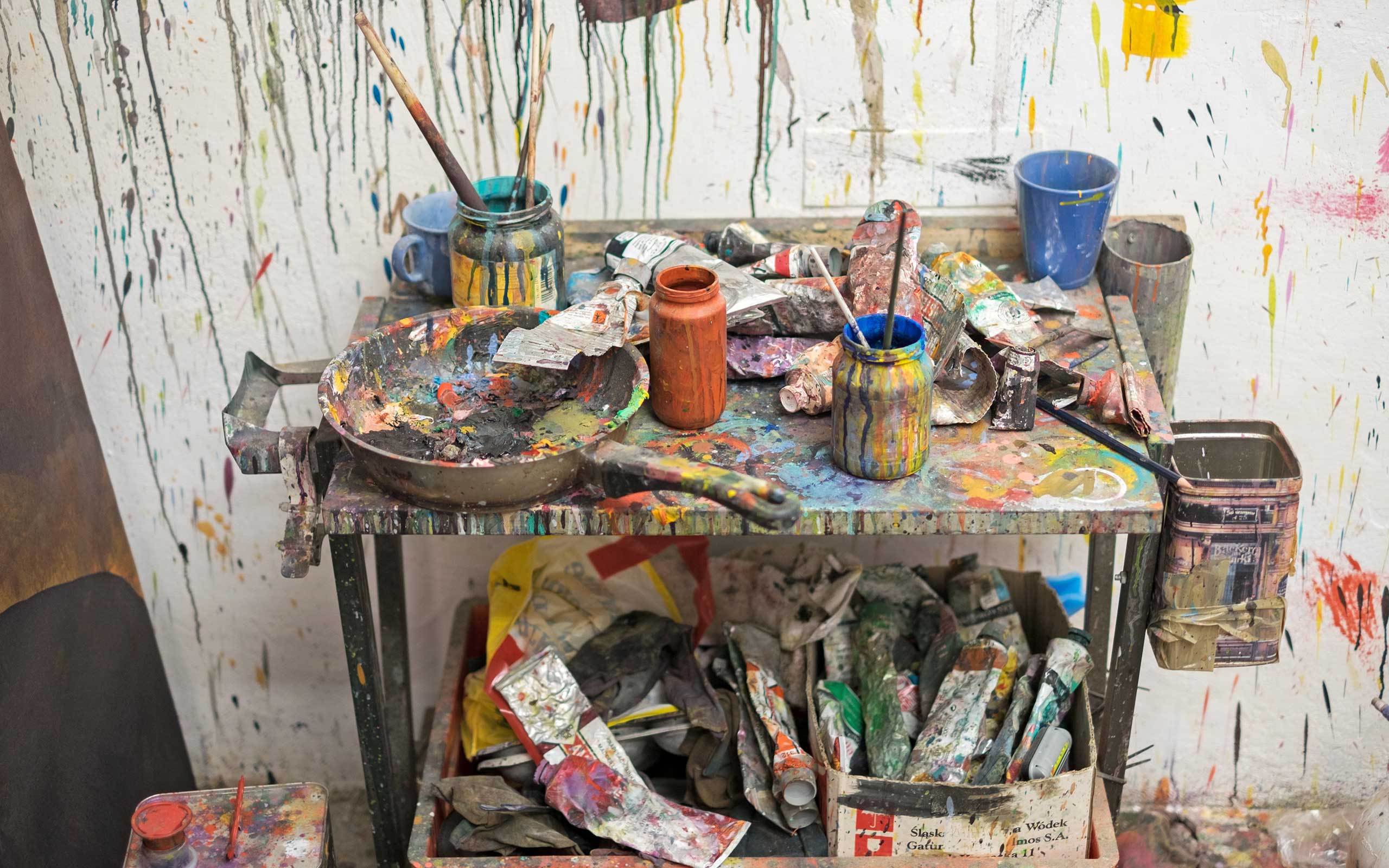
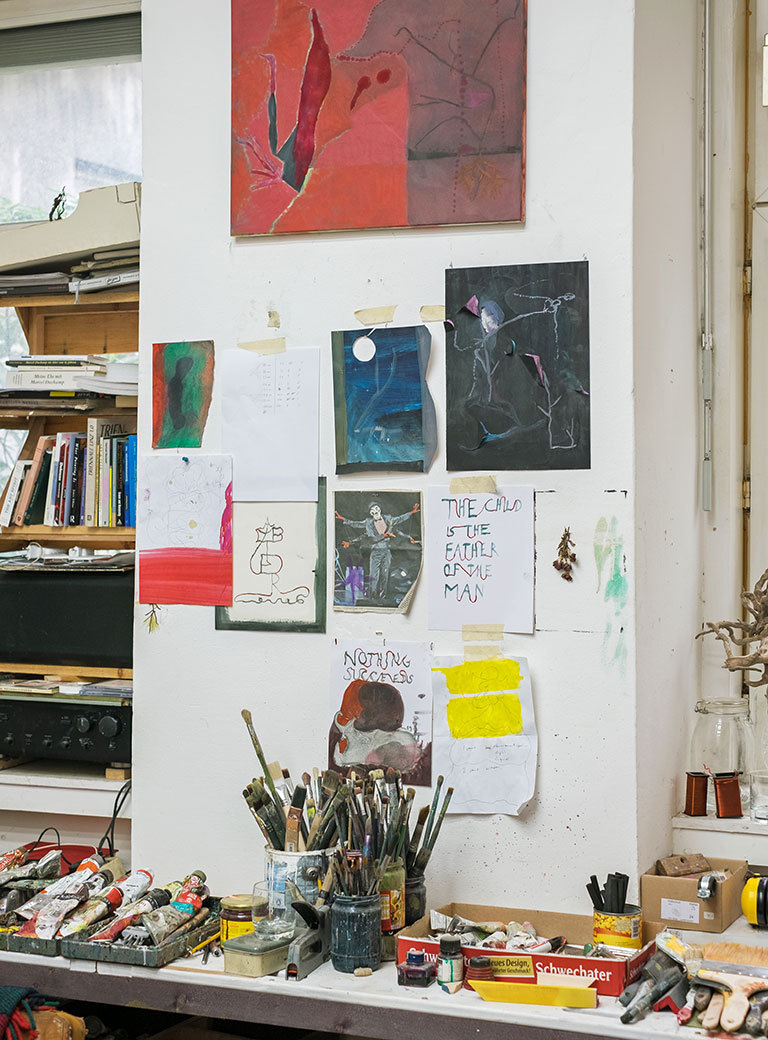
Woody Allen once said: “If one does not make a new film in six months, people think immediately one sleeps every day until noon and sits only on the couch.” What does your workday look like?
Because my children are early risers I now have a routine. By nature I am someone who would like to sleep in, but I take my kids to daycare and school, and then I go to my studio. Family life helps to create some distance between my work and my home, so that I don't leave the studio and think it is all about me. At home it is not really important that I am an artist, there I am a husband and a father. Therefore I return to the studio with a much clearer mind the next day.
How is it for your kids that their father is not a banker but an artist?
It is a given for them that painting is my profession. Occasionally they spend time in my studio. But I deliberately separate the two areas of family and work – a heart surgeon also doesn’t take his children to work –, that way they have the feeling their father has a normal job and loves it. That is the most important thing to give one's children, the feeling that work is good. One should do something that is exciting. They never hear me say “Oh, now I have to go to the studio again” and therefore they will have a positive image of creative and physical labour. That is the most precious thing. I don’t mind what they will do later. I won’t mind if they do work in a bank. However, it would make me extremely proud, if one of my children were to become a painter. For some time I made the silly joke: “My children should do something sensible," but meanwhile I think art is a very noble activity.
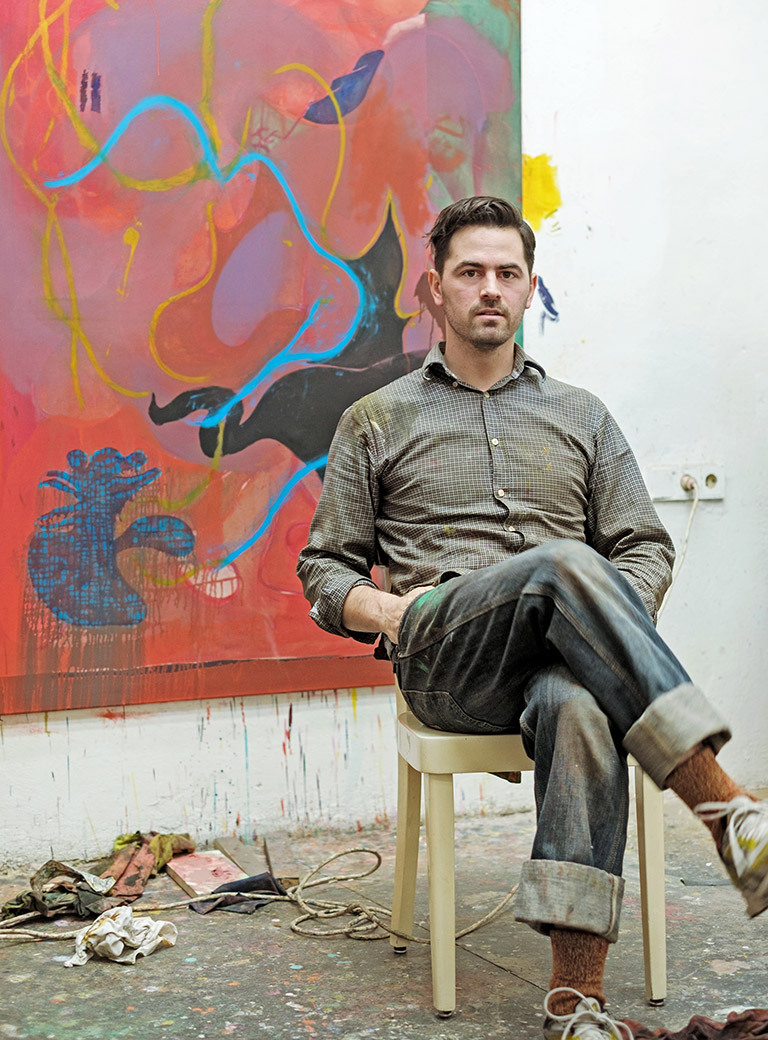
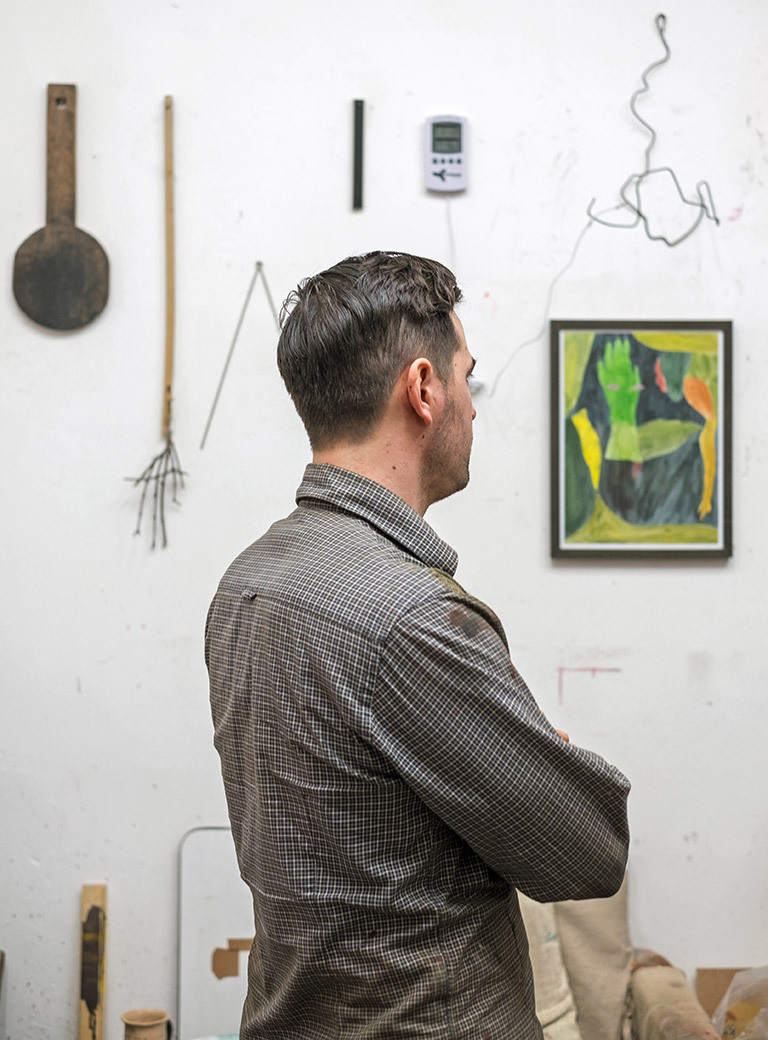
Interview: Michael Wuerges
Photos: Maximilian Pramatarov


